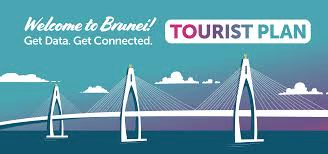
EE’s Being Accused of Throttling Roaming Data
If you’ve ever traveled abroad and used your mobile data, you might have experienced slower internet speeds, especially after using a certain amount of data. This is often due to throttling, a practice many telecom providers implement when roaming data limits are reached. EE roaming throttling
What is Data Throttling?
Data throttling occurs when a telecom provider deliberately slows down your internet speed once you’ve consumed a set amount of data within your roaming plan. This cap varies by provider and plan, and throttling may reduce speeds to levels that can make browsing, streaming, or even checking email frustratingly slow.
Why Do Providers Throttle Roaming Data?
- Cost Management: Roaming is expensive for providers due to partnerships with international networks. Throttling helps control costs while still providing customers with access to data services.
- Network Congestion: When a large number of people are using the network, especially in tourist-heavy areas, providers may throttle to ensure fair usage and prevent network congestion.
EE customers not on the firm’s top-end data tariff have complained they are receiving sloth-like speeds of 2Mbps when using data abroad. On its Free EU Roaming support page, EE said:
“4GEE Max customers will get our fastest available speeds at home and abroad. EE roaming throttling
But please note: maximum speeds will be dependent on the local network and may not be as fast as at home.” In EE’s “Roaming for Pay Monthly Customers” the company said:
If you have any plan other than an EE 4GEE Max plan you will get our standard roaming data speeds when in the EU. This is likely to be slower than in the UK and fast enough to use your phone as you normally would, including streaming music and standard-definition video (or better). If you want access to faster speeds you will be able to buy one of our Max plans or a speed add-on (where available). If you are on an EE 4GEE Max Plan you’ll get access to the fastest available speeds when abroad. EE roaming throttling
One customer, who asked not to be named, said:
“To me, this indicates that because EE have been forced by the EU to provide free EU roaming, they’re forcing customers to have slow speeds, but if you are willing to pay for data (either by moving to a more expensive Max Plan or buying a speed add-on), you can experience full speeds while roaming in the EU.” EE roaming throttling
EE is not the only firm to face criticism for its failure to provide “roam like home” speeds this summer. O2 has admitted to temporarily throttling its network, Three has said it has no date yet for enabling 4G, with Vodafone customers also having complained about sluggish speeds. Sadly it seems many users are being forced to read a book, or sight-see, rather than gawp at Netflix while on hols.
How It Affects You
Throttling can be particularly problematic if you rely on data for essential services like GPS, travel apps, or streaming. Depending on your provider, throttling may kick in after you’ve used as little as a few gigabytes of data.
Avoiding Throttling
- eSIM Plans: Consider buying local or international eSIM data plans that offer better rates or unlimited data without throttling. eSIMs can be an excellent option for frequent travelers.
- Wi-Fi Use: Utilize Wi-Fi wherever possible to conserve mobile data.
- Choose the Right Plan: Check with your provider for plans specifically designed for heavy roaming users, which might offer higher data limits before throttling occurs.
Throttling might be annoying, but being aware of how it works and how to manage your data usage can help you navigate the digital world while traveling.










